Operational GOES-SST and MSG-SEVIRI-SST Products
for GOES-R Risk Reduction
Eileen Maturi, NOAA/NESDIS/STAR/SOCD
Andrew Harris, and Jon Mittaz, CICS, University of Maryland
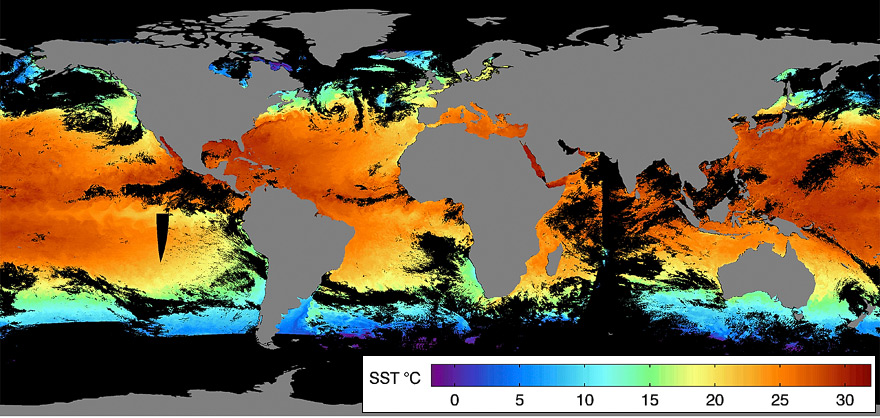
Introduction
Sea surface temperature is a key climate parameter, and can serve as a
powerful diagnostic tool for many aspects of instrument and processing
chain performance. These include calibration, cloud detection, instrument
characterization and radiative transfer modeling (RTM).
Current GOES-Imager
The current GOES-Imager possesses a relatively small subset of the
Advanced Baseline Imager (ABI) capabilities. This current imager is more
useful for certain aspects of anticipated ABI performance (e.g.
calibration - due to the 3-axis stabilization and concomitant thermal
cycling). An improved sun-shield was fitted to the MT-SAT 1R, which is
likely to be more representative of the situation on the ABI.
Radiance bias - a critical aspect of physical retrieval methodology
There is a trend in radiance bias with brightness temperature (far left plot below).
However, the variation is best predicted by atmospheric correction
(i.e. the "net" effect of the atmosphere) implying a radiative transfer
problem (e.g. SRF). Also, bias should →0 as atmospheric correction →0.
There is still a significant cycle of bias in throughout the day (far right plot below).
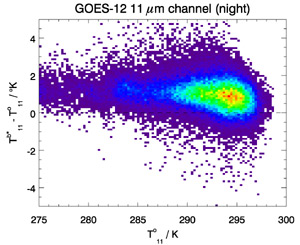
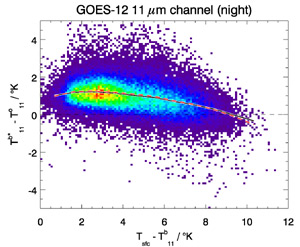
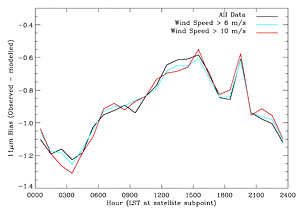
Methodology
The careful analysis of both proxy data sets, combined with simulated
ABI data, will be used. The findings will be extrapolated on the basis of
instrument and retrieval physics in order to build a best-estimate model
of the ABI performance. Tools will also be developed to quickly diagnose
on-orbit problems in terms of physical instrument parameters.
MSG-SEVIRI Instrument
The physical SST retrieval methodology developed for the operational
MSG-SEVIRI SSTs are similar to the techniques that will be employed for
the ABI. The extension from 5 (GOES Imager) to 12 channels (SEVIRI)
allows the refining and testing of methodologies that will be required in
the GOES-R era. Certain aspects are not well-matched (e.g. spin-scan vs.
3-axis stabilized, and the "over-broad" 3.8 micron channel of the
former).
Bayesian Cloud Detection
Bayesian cloud detection is our method for discriminating cloudy and
clear radiances (see Merchant et al., QJRMS, Oct. 2005). The current
operational scheme uses a static global prior PDF for cloudy radiances.
Here, we examine the variation with location, season, and view angle at
the "sharp end", i.e. where BTs are close to those of clear-sky.
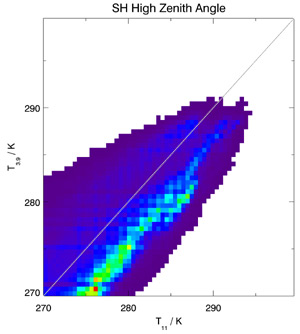
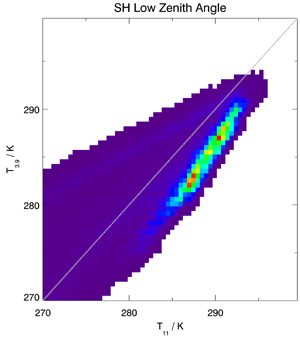
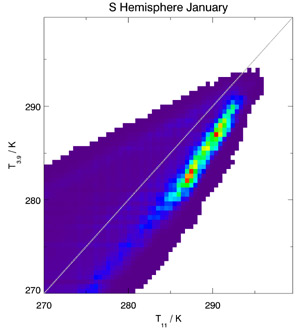
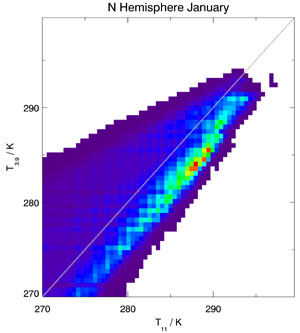
This page excerpted from a presentation at the
>88th AMS Annual Meeting,
New Orleans, Louisiana, 20-24 January 2008.

